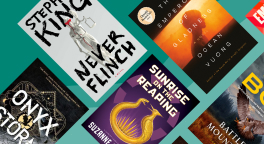Gaussian Self-Affinity and Fractals: Globality, the Earth, 1/F Noise, and R/S
Select Format
Select Condition 
You Might Also Enjoy
Book Overview
Benoit Mandelbrot is a world-renowned scientist whose pioneering research significantly advanced the field of fractal geometry. This is the third volume of his Selected Works, focusing on a detailed study of fraction Brownian motions. The fractal themes of "self-affinity" and "globality" are presented. Extensive introductory material, written especially for this book, precedes the papers and presents a number of striking new observations and conjectures. The mathematical tools discussed will be valuable to diverse scientific communities.
Format:Hardcover
Language:English
ISBN:0387989935
ISBN13:9780387989938
Release Date:December 2001
Publisher:Springer
Length:654 Pages
Weight:2.50 lbs.
Dimensions:1.4" x 6.4" x 9.6"
More by Benoît B. Mandelbrot
Customer Reviews
5 customer ratings | 5 reviews
There are currently no reviews. Be the first to review this work.




















![Essential Calculus: Early Transcendentals [with WebAssign & Start Smart Guide]](https://i.thriftbooks.com/api/imagehandler/s/62B847D74EA98952C0237B7A5BB07695CC4BC2E3.jpeg)


![An Imaginary Tale: The Story of "i" [the square root of minus one]](https://i.thriftbooks.com/api/imagehandler/s/D50755FE437DF16DA7757F4B488F63D4274E947C.jpeg)



























